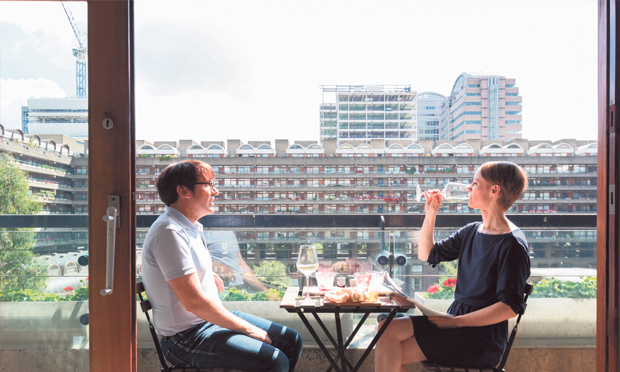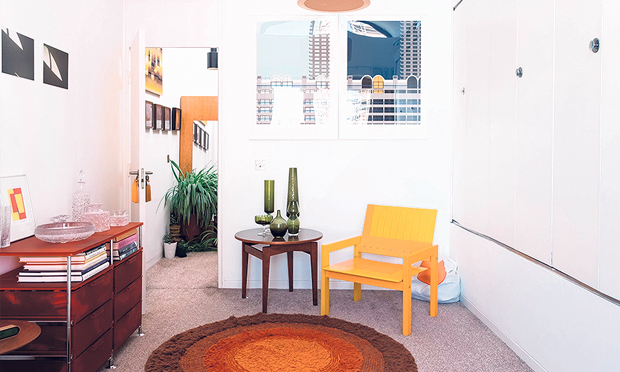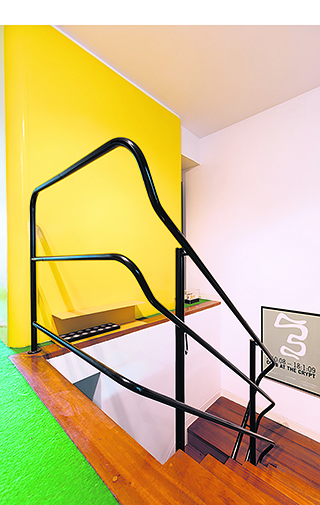The Barbican: who lives on an estate like this?

Comfortable: estate residents dine out on their balcony. Photograph: Anton Rodriguez
Getting lost in the maze-like Barbican Estate is a rite of passage for many a Londoner.
The Grade II-listed complex was opened by the Queen in 1982, who declared it “one of the modern wonders of the world”.
The estate was designed by the architectural firm Chamberlin, Powell and Bon as part of its utopian vision to transform an area of London that had been devastated by bombing during the Second World War.
Whilst attempting to navigate the Barbican’s labyrinthine walkways, it is easy to be distracted by the architecture, and in particular the three residential towers, standing at 404 feet, that at one time were the tallest in London.
The Barbican Estate is home to some 4,000 people – but for such an iconic complex, relatively little is known about life on the inside. Who lives there, what do their homes look like, and is it true that listings regulations protect the bathplugs?

Photograph: Anton Rodriguez
Anton Rodriguez, a photographer and estate resident, demystifies the estate’s enigma with his book Residents: Inside the Barbican Estate.
The book is a series of 22 portraits of Barbican residents and their flats that a gives rare insight into what it is like to live there.
The Barbican’s modernist aesthetic could be seen as cold and impersonal, but the residents interviewed and photographed would disagree.

Vibrant: fittings in the flats are apparently ‘reminiscent of a luxury car’. Photograph: Anton Rodriguez
Nigel, an actor and voice over artist, has a flat with barrel-vaulted ceiling that floods the rooms with light. He describes the Barbican as a “concrete oasis amidst the yin-yang complexion of living in the City”.
Others praise the huge windows that flood the flats with natural light, the sliding timber doors, the mezzanine levels and compact kitchens designed by boat-builders. One calls the attention to detail in the flats “reminiscent of a luxury car”.
Most of the young residents featured in the book work in fields such as architecture, design, the media or business and some have young families.
For some, flicking through this book and gazing at the stylish and comfortable interiors whilst a housing crisis rages might seem perverse.
But for design journalist Katie Treggiden in her introductory essay to the book, the Barbican is an “icon of altruistic architecture… driven by an aspiration to bring a better way of life to the British people.”
The Barbican’s modernist design has seen it top numerous ‘ugly building’ polls, but for its residents who have experienced the quality of life there – the spaciousness and light in particular – the only shame is that it remains an anomaly among housing estates.
As the historian Tom Dixon says in the book Barbican: Life, History, Architecture: “The Barbican reminds us of how different it all could have been.”
Residents: Inside the Barbican Estate by Anton Rodriguez is published by the Barbican. RRP: £30. ISBN: 9780952734154
